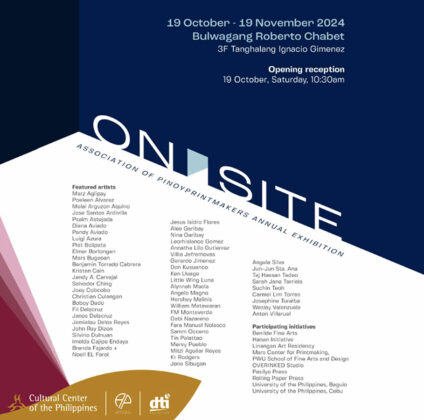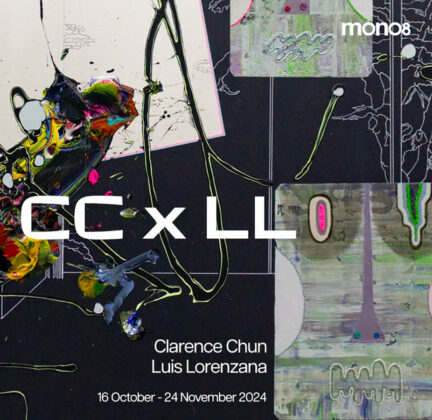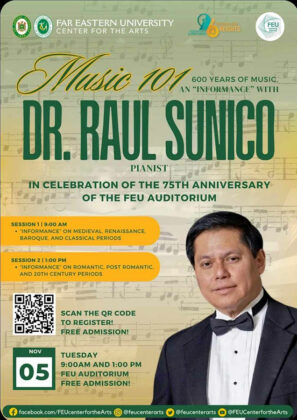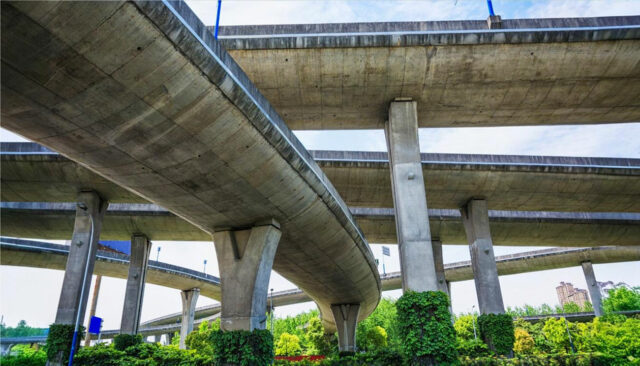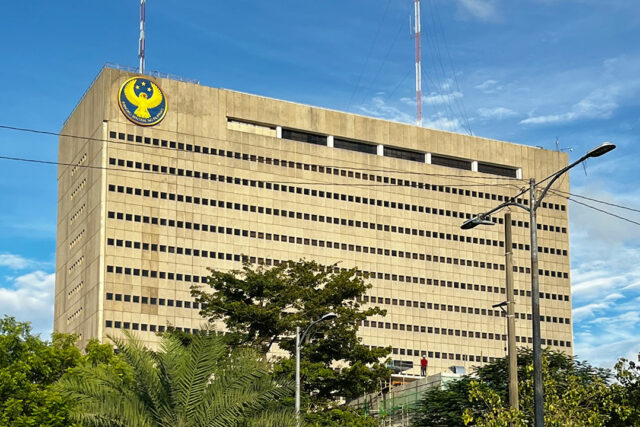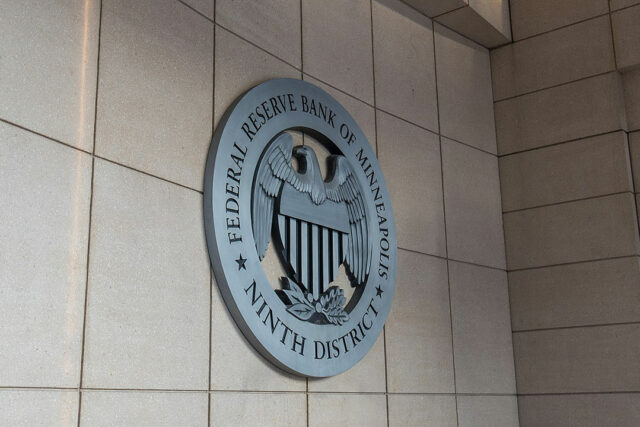Arts & Culture (10/23/24)
Free public lecture on paper, print, press processes
THE free public lecture “Hot Off The Press: The Language of Production” will be teaching the importance of paper selection and the pre-press and post-press processes. Set for Oct. 25 at 1 p.m., it is designed for creative entrepreneurs who want to understand different methodologies in print production and address the various challenges of translating digital to print. It is a collaboration between the Museum of Contemporary Art and Design (MCAD), the GA Printing company, and multimedia student group Media MAX. The facilitator will be Mercedes Cruz, business development manager of GA Printing. The workshop is free and open to the public and will be held on the 8th floor learning commons of the Benilde Design + Arts campus. Interested participants may register through forms.gle/4KTZpqgaktZ7SZhJ7.
Ayala Museum’s Project Yazz focuses on jazz
KNOWN for giving classic OPM songs unique jazz reinterpretations, Project Yazz will be holding a performance at the Ayala Museum on Oct. 26, 8 p.m., as part of the Jeepney Jazz sessions this year. Originally formed in 2017, the five-member, Quezon City-based group features Faye Yupano as the vocalist and Bergan Nunez on bass guitar. They jam regularly to develop their ongoing Filipino jazz music project. One of their original ballad compositions is “Kape,” which fans can look forward to hearing at the showcase. Tickets to show can be secured via bit.ly/fhl-JJ24S4. Rates, inclusive of food and drinks, are P1,500 for regular attendees, P1,200 for Ayala employees, and P1,000 for seniors and PWDs.
Othello to return in March 2025
DUE to popular demand, CAST’s production of Othello will be re-staged in March 2025, with tickets now available. It will run for eight performances only, all held at The Mirror Theatre Studio on the 5th floor of SJG Bldg., 8463 Kalayaan Ave., Makati City. There will be 8 p.m. performances on March 7 to 9 and 14 to 16, and 2:30 p.m. performances on March 9 and 16. The hyper-intimate staging will allow for an audience of only 100 per show, with free seating. Tickets, priced at P1,000, are available via https://bit.ly/OthelloTixForm.
Marco Polo Ortigas unveils Providence sculpture
ARTIST Angelico “Jik” Villanueva’s four-meter brass sculpture Providence can now be seen at the lobby of Marco Polo Ortigas. It was created in collaboration with ManilART’24 and the 20th Annual Sculpture Review. The piece depicts ants carrying gems on a branch, symbolizing the harmony between humanity and nature. Its location at the hotel lobby is part of a satellite exhibit celebrating National Museum and Galleries Month. Other sculptors in the exhibit, curated by Gab Loste, are Agi Pagkatipunan and Ombok Villamor. The exhibit closes on Oct. 28.
Association of Pinoyprintmakers holds exhibit at CCP
THE Cultural Center of the Philippines (CCP) has opened On Site: Association of Pinoyprintmakers Annual Exhibition, a group exhibition exploring the complex and evolving practice of printmaking in the Philippines. Held at the Bulwagang Roberto Chabet (Tanghalang Ignacio Gimenez Gallery), it features the works of senior printmakers Virgilio Aviado, Benjamin Torrado Cabrera, Fil Delacruz, Imelda Cajipe Endaya, Jesus Isidro Flores, and Brenda Fajardo, among many other artists. Participating initiatives include De La Salle College of Saint Benilde Fine Arts Program, the Hanan Printmaking Group, the Linangan Artist Residency, the MARS Center for Printmaking (Philippine Women’s University), Over Inked Studio, Pasilyo Press, Rolling Paper Press, UP Cebu, and UP Baguio. The exhibit runs until Nov. 19.
MONO8 exhibits Clarence Chun, Luis Lorenzana
THE two-person exhibition CCxLL, presented by MONO8, is currently running at the MONO8 Gallery at BLK 113, 53 Connecticut St., Greenhills, San Juan City. It presents the works of visual artists Clarence Chun and Luis Lorenzana in conversation for the first time. In Mr. Chun’s paintings, the boundaries of technique are pushed by visualizing speed and time, his multi-stage process of washing, masking, and detailing his canvases manifesting themselves in sweeping bands of color. Meanwhile, Lorenzana’s work plays upon portraiture’s historical tradition, building upon the genre by stripping down, warping, and rebuilding the sitter until they are totally abstracted. The two painters will also unveil their very first collaborative series in which their respective approaches to the same painterly queries — composition, form, technique, color — coalesce on shared canvases. The exhibit runs until Nov. 24
Music 101 with Raul Sunico in November
IN CELEBRATION of the 75th anniversary of the Far Eastern University (FEU) Auditorium, the FEU Center for the Arts is presenting Music 101: 600 Years of Music, an “informance” featuring renowned pianist Dr. Raul Sunico. He will give lecture demonstrations on music history, from the medieval to contemporary periods, on Nov. 5, at 9 a.m. and 1 p.m. The morning session will focus on the Medieval, Renaissance, Baroque, and Classical Periods. The afternoon session will revolve around the Romantic, Post Romantic, and 20th Century Periods. The event is free for all. Interested parties can register via this link: https://forms.office.com/r/jVE896xVh4.
Loboc Children’s Choir receives CCP honor
THE Loboc Children’s Choir (LCC), represented by their musical director and conductor Alma Fernando-Taldo, recently received the Gawad CCP Para sa Sining. As part of the center’s 55th anniversary, awards were given to artists or groups of artists in dance, music, theater, film and broadcast arts, literature, visual arts, architecture, and allied arts and design who have/had consistently produced outstanding works in their art form. During her acceptance speech, Ms. Fernando-Taldo said that the LCC started as a simple choir of children and for children in the small and remote town of Loboc in the province of Bohol. Founded in 1980, it was composed of children aged nine to 13 from the Loboc Central Elementary School. Over the decades, it has blossomed into one of the Philippines’ most celebrated young choral ensembles, its accolades including grand prizes at the National Music Competitions for Young Artists (NAMCYA) in 1993, 1995, and 2001.
PHL at the 2025 Frankfurter Buchmesse
AS a culturally diverse nation of 7,641 islands, the Philippines will highlight the strength of this diversity by featuring national artists, indigenous traditions, global perspectives, and a tribute to national hero Jose Rizal in its Philippine Pavilion at the Frankfurther Buchmesse next year. It will also be a momentous year, with the country being the Guest of Honor at the book fair. Inspired by a line from Rizal’s Noli Me Tangere, it will operate under the theme “The imagination peoples the air.” Patrick Flores, curator of the Philippine Pavilion, said at a press conference on Oct. 17 at the ongoing 2024 Frankfurter Buchmesse that the theme will convey the act of “imagining” as a graphic and geometric abstraction brought to life. The color scheme will reflect Rizal’s descriptions of the vivid tones of gold, blue, red, and green in the settings and characters of his book, while the typefaces will refer to letters used in the first printing of Noli around 1890. In 2025, the Philippines will double the numbers of representatives and books in the 2,000 square-meter pavilion creating a hub for dialogue and inspiration.






